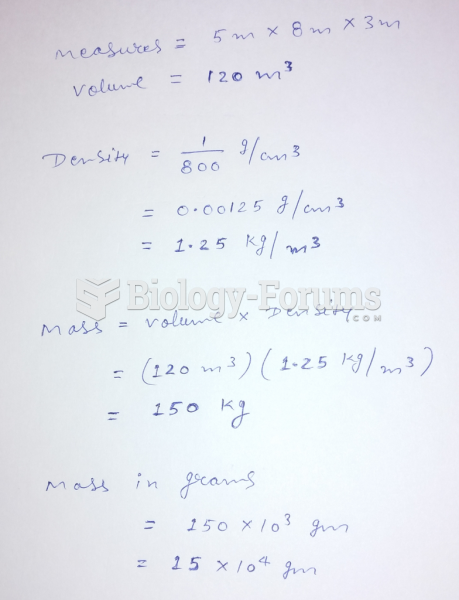|
|
|
The most common treatment options for addiction include psychotherapy, support groups, and individual counseling.
Between 1999 and 2012, American adults with high total cholesterol decreased from 18.3% to 12.9%
Persons who overdose with cardiac glycosides have a better chance of overall survival if they can survive the first 24 hours after the overdose.
The average adult has about 21 square feet of skin.
The Centers for Disease Control and Prevention has released reports detailing the deaths of infants (younger than 1 year of age) who died after being given cold and cough medications. This underscores the importance of educating parents that children younger than 2 years of age should never be given over-the-counter cold and cough medications without consulting their physicians.







